What is On-Page SEO and why is it important?

What is On-Page SEO and why is it important?
On-Page SEO refers to the set of actions taken within a website to improve the site’s ranking in search engine results.
These actions include optimizing content, site structure, HTML tags, and other related factors.
In fact, the goal of On-Page SEO is to improve user experience and increase the chance of the site being seen by search engines like Google.
The importance of On-Page SEO stems from the fact that search engines determine a site’s ranking by carefully examining its content and structure.
The better a site’s On-Page SEO, the more likely it is to appear on the first pages of search results.
This leads to increased website traffic, attracting the target audience, and ultimately improving the business.
On-Page SEO is the foundation of a successful SEO strategy, and without it, other efforts in Off-Page SEO will not achieve the desired result.
Key elements in #OnPageSEO include optimizing page titles, meta descriptions, using appropriate keywords, improving site speed, and creating high-quality and relevant content.
Did you know that your company’s website is the first point of contact for 75% of potential customers?
Your website is the face of your brand. With **Rasaweb’s** corporate website design services, build an online presence that earns customer trust.
✅ Create a professional and lasting image of your brand
✅ Attract target customers and increase online credibility
⚡ Get free consultation from **Rasaweb** experts!
Keyword Research – The Cornerstone of On-Page SEO

Keyword Research – The Cornerstone of On-Page SEO
Keyword research is one of the most important steps in On-Page SEO.
Choosing the right keywords helps you optimize your website content in a way that is attractive to the target audience and, at the same time, easily understood by search engines.
To start keyword research, you should first create a list of topics related to your business.
Then, using keyword research tools like Ahrefs Keyword Explorer, KeywordTool.io, and Ubersuggest, find keywords related to these topics.
When choosing keywords, pay attention to Search Volume and Keyword Difficulty.
Keywords with high search volume and low competition are good options to target.
Also, pay attention to the diversity of keywords and use Long-Tail Keywords as well.
These keywords usually have lower search volume, but they are more specific and increase the chance of attracting the target audience.
Finally, use the selected keywords naturally and relevantly in your website content.
Avoid keyword stuffing, as this can lead to your site being penalized by search engines.
Optimizing the Page Title (Title Tag) and Meta Description
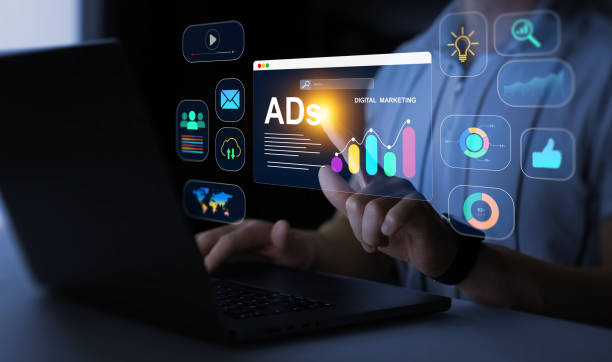
Optimizing the Page Title (Title Tag) and Meta Description
The Page Title (Title Tag) and Meta Description are among the most important elements of On-Page SEO that are displayed in search results.
The Page Title is the main title of the page that is displayed in the browser’s title bar and in search results.
The Meta Description is a summary of the page’s content that is displayed below the page title in search results.
Optimizing these two elements helps search engines better understand the content of the page and, at the same time, encourages users to click on your site’s link.
To optimize the Page Title, use the main keywords of the page and try to write an attractive and relevant title.
The length of the Page Title should not exceed 60 characters.
To optimize the Meta Description, write an accurate and attractive summary of the page’s content and use relevant keywords.
The length of the Meta Description should not exceed 160 characters.
Both elements should be unique, and you should consider a different title and description for each page of the site.
Using Call-to-Action (CTA) in the Meta Description can increase the click-through rate (CTR).
For example, you can use phrases like “Read More” or “Buy Now”.
| Feature | Description |
|---|---|
| Page Title (Title Tag) | The main title of the page that is displayed in search results. |
| Meta Description | A summary of the page’s content that is displayed below the title in search results. |
| Page Title Length | Maximum 60 characters |
| Meta Description Length | Maximum 160 characters |
Content Optimization – The King of On-Page SEO
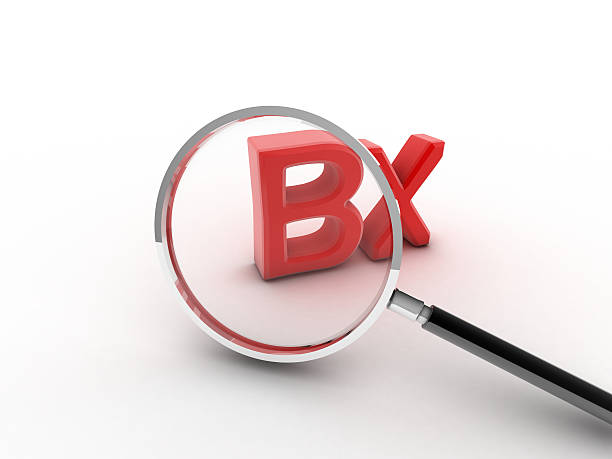
Content Optimization – The King of On-Page SEO
Content is the most important factor in On-Page SEO.
High-quality and relevant content not only attracts users, but also helps search engines better understand the topic and value of your site.
To optimize content, you must first create content that is useful and attractive to your target audience.
The content should answer users’ questions and needs and provide accurate and up-to-date information.
Use relevant keywords in the content, but avoid overdoing it.
Keywords should be placed naturally and relevantly in the text.
Divide the content into smaller sections and use Headings and Subheadings to organize the content.
Using images and videos can increase the attractiveness of the content and help to better understand it.
Optimize images with Alt Text so that search engines can understand their content.
Internal Linking to other pages of the site helps search engines better understand the structure of your site and directs users to relevant pages.
Update the content regularly to keep it fresh and relevant.
On-Page SEO is not just about using keywords, but creating content that meets the user’s needs.
Is your online store ready to attract maximum customers and increase sales? Rasaweb transforms your online business with modern and efficient online store designs.
✅ Increased speed and improved SEO
✅ Excellent user experience on mobile and desktop⚡ Get free online store design consultation from Rasaweb!
Image Optimization for On-Page SEO
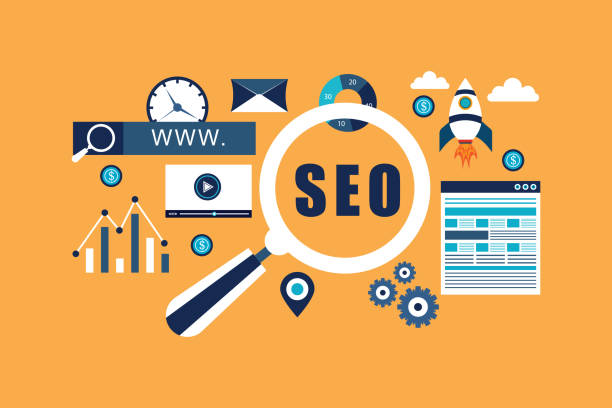
Image Optimization for On-Page SEO
Image optimization is another important aspect of On-Page SEO that is often overlooked.
Images can increase the attractiveness of content and help to better understand it, but if they are not properly optimized, they can slow down the site’s loading speed and negatively impact the site’s SEO.
To optimize images, you must first reduce their size.
You can use online tools like TinyPNG or ImageOptim to compress images.
Use the appropriate format for images.
JPEG format is suitable for images with many colors, and PNG format is suitable for images with simple graphics.
Use an appropriate file name for the images.
The file name should be relevant to the image content and use relevant keywords.
Use Alt Text for images.
Alt Text is text that is displayed instead of the image if it is not displayed.
Alt Text should be descriptive and relevant to the image content, and use relevant keywords.
By optimizing images, you can improve the site’s loading speed and help search engines understand the content of the images.
Improving Site Speed – A Key Factor in On-Page SEO
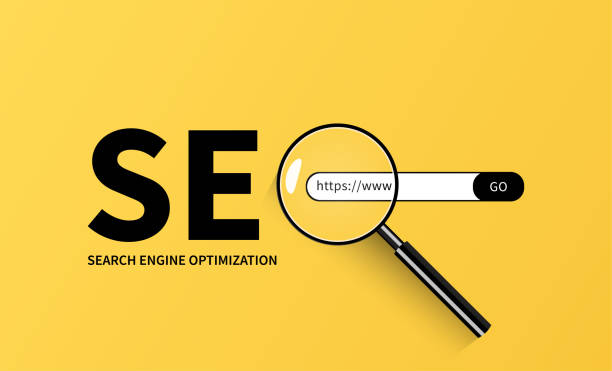
Improving Site Speed – A Key Factor in On-Page SEO
Site speed is one of the most important factors in On-Page SEO that directly affects user experience and site ranking in search results.
Users who encounter a slow site are more likely to leave it, and this can lead to a decrease in Conversion Rate.
Search engines also consider site speed as a ranking factor and prioritize faster sites.
To improve site speed, you must first check your site speed.
You can use tools like Google PageSpeed Insights or GTmetrix to do this.
These tools provide a detailed report of your site speed problems and suggest ways to improve it.
Some ways to improve site speed include: optimizing images, using CDN (Content Delivery Network), enabling caching, reducing the size of CSS and JavaScript files, using appropriate hosting, and optimizing site code.
By improving site speed, you can improve user experience and improve your site’s ranking in search results. On-Page SEO with high speed provides a good user experience.
Internal Linking – A Way to Improve Site Structure
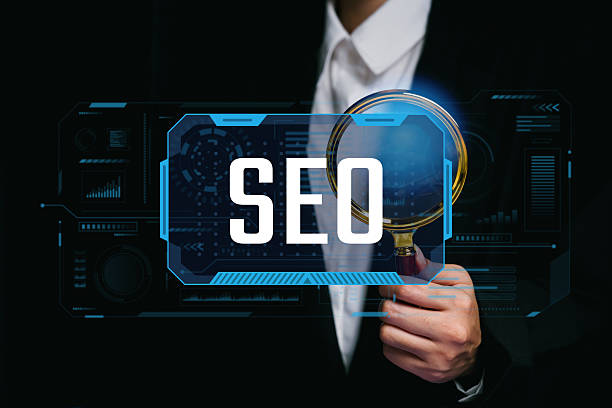
Internal Linking – A Way to Improve Site Structure
Internal linking refers to the process of creating links between different pages of a website.
This not only helps users easily navigate the site and find related pages, but also helps search engines better understand the site structure and recognize the importance of different pages.
Internal linking is an important aspect of On-Page SEO that can help improve a site’s ranking in search results.
For internal linking, you should strategically create links between related pages.
For example, if you are talking about “content marketing” on one page, you can link to other pages of the site that talk about “content strategy” or “content creation”.
The links should be relevant and useful and help users to learn more about the topic in question.
Use appropriate Anchor Text.
Anchor Text is the text that is displayed as a link.
The Anchor Text should be relevant to the destination page and use relevant keywords.
However, avoid using too many keywords and try to keep the Anchor Text natural and fluid.
| Advantage | Description |
|---|---|
| Improved Site Structure | Helps search engines better understand the site structure. |
| Improved User Experience | Helps users easily navigate the site. |
| Increased Site Ranking | Helps to improve the site’s ranking in search results. |
Mobile Optimization – An Undeniable Necessity
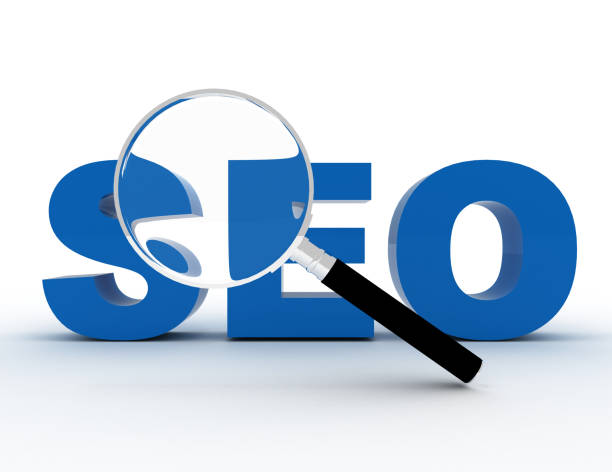
Mobile Optimization – An Undeniable Necessity
Given the increasing use of mobile devices for searching the internet, optimizing a site for mobile (Mobile-Friendly) has become an undeniable necessity.
Google and other search engines prioritize sites that are optimized for mobile.
Mobile optimization includes responsive design, improving loading speed on mobile, and providing a good user experience on mobile devices.
Responsive design means that your site automatically adapts to the screen size of different devices (mobile, tablet, desktop).
To check whether your site is optimized for mobile, you can use the Google Mobile-Friendly Test tool.
This tool provides a detailed report of your site’s mobile problems and suggests ways to improve it.
On-Page SEO is very important on mobile and should be paid attention to.
Is your online store ready to attract maximum customers and increase sales? Rasaweb transforms your online business with modern and efficient online store designs.
✅ Increased speed and improved SEO
✅ Excellent user experience on mobile and desktop⚡ Get free online store design consultation from Rasaweb!
Using Structured Data (Schema Markup)
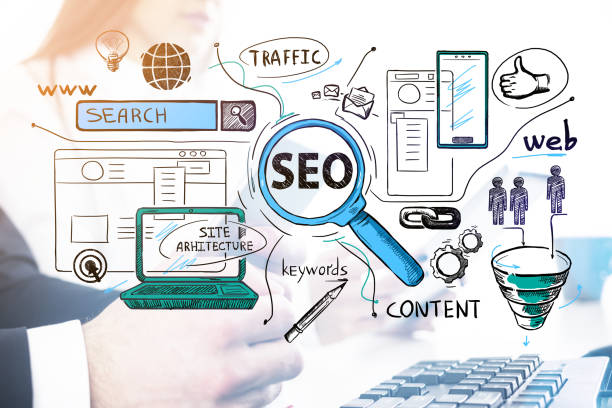
Using Structured Data (Schema Markup)
Structured Data (Schema Markup) are codes that help search engines better understand the content of your site’s pages.
By using Structured Data, you can provide accurate information about products, articles, events, and other types of content to search engines.
This information is displayed in search results as Rich Snippets and can increase the click-through rate (CTR).
To use Structured Data, you can use the Schema.org tool.
This site provides a collection of codes and definitions that you can use to mark up your content.
On-Page SEO using Structured Data will bring better results.
Monitoring and Measuring On-Page SEO Results
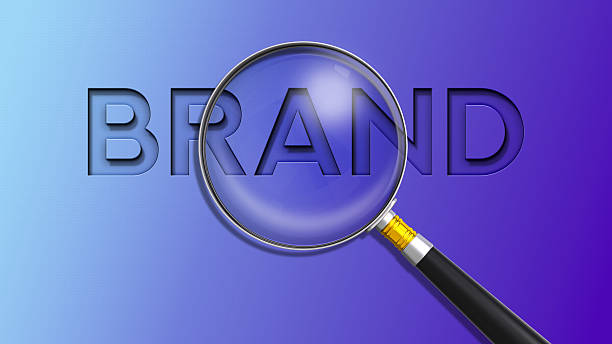
Monitoring and Measuring On-Page SEO Results
After taking On-Page SEO actions, it is important to regularly monitor and measure your results.
This helps you understand which actions were effective and which actions need improvement.
To monitor and measure On-Page SEO results, you can use tools like Google Analytics and Google Search Console.
These tools provide accurate information about site traffic, keyword ranking, click-through rate, and other important metrics.
By reviewing this information, you can identify the strengths and weaknesses of your On-Page SEO strategy and take the necessary actions to improve it.
On-Page SEO is an ongoing process and requires monitoring and updating.
Frequently Asked Questions
| No. | Question | Answer |
|---|---|---|
| 1 | What is On-Page SEO? | On-Page SEO refers to the set of actions taken within a website and to optimize its pages in order to achieve a better ranking in search results. |
| 2 | What is the most important factor in On-Page SEO? | High-quality, relevant, and comprehensive content that meets the user’s needs is the most important factor in On-Page SEO. |
| 3 | What role does the Title Tag play in On-Page SEO? | The Title Tag is one of the most important factors that tells search engines and users what the content of the page is about. It should include the main keyword and be attractive. |
| 4 | How important is the Meta Description Tag? | Although it does not directly affect ranking, it is very effective on the click-through rate (CTR) in search results and encourages users to visit the page. |
| 5 | How is image optimization done in On-Page SEO? | By using an appropriate alt tag, compressing the image size to increase loading speed, and naming the image file meaningfully. |
| 6 | What is the importance of using Headings (H1, H2, H3) in On-Page SEO? | Headings help structure the content, increase readability, and help search engines understand the hierarchy and subtopics of the content. |
| 7 | What does Internal Linking mean and what are its benefits? | Internal linking means creating links between different pages of a website. This helps distribute credit, improve user navigation, and help search engines crawl. |
| 8 | Where should the Focus Keyword be placed on the page? | The main keyword should be in the title tag, meta description, H1, first paragraph, and naturally throughout the text and, if possible, in the URL address. |
| 9 | What effect does duplicate or copied content have on On-Page SEO? | Duplicate content can harm the site’s ranking and confuse search engines as to which version is the original and may recognize it as spam. |
| 10 | How important is page load speed in On-Page SEO? | Page load speed is an important ranking factor and directly affects user experience. Slow pages increase the bounce rate of users. |
And other services of Rasa Web advertising agency in the field of advertising
Smart Brand Identity: Professional optimization to improve SEO ranking using real data.
Smart Social Media: A new service to increase customer attraction through attractive user interface design.
Smart Marketing Automation: A dedicated service to grow website traffic based on Google Ads management.
Smart Marketing Automation: Professional optimization to attract customers using attractive user interface design.
Smart UI/UX: A combination of creativity and technology for digital branding by accurately targeting the audience.
And more than hundreds of other services in the field of internet advertising, advertising consulting and organizational solutions
Internet Advertising | Advertising Strategy | Advertorial
Sources
What is On-Page SEO?
,Internal Website Optimization
,What is On-Page SEO and how is it done?
,Complete On-Page SEO Tutorial in 2023
? To boost your business in the digital world, count on the expertise of “Rasaweb Afarin”! We help you have a powerful and effective online presence by providing comprehensive digital marketing services, including multilingual website design.
📍 Tehran, Mirdamad Street, next to the Central Bank, South Kazerun Alley, Ramin Alley, No. 6




